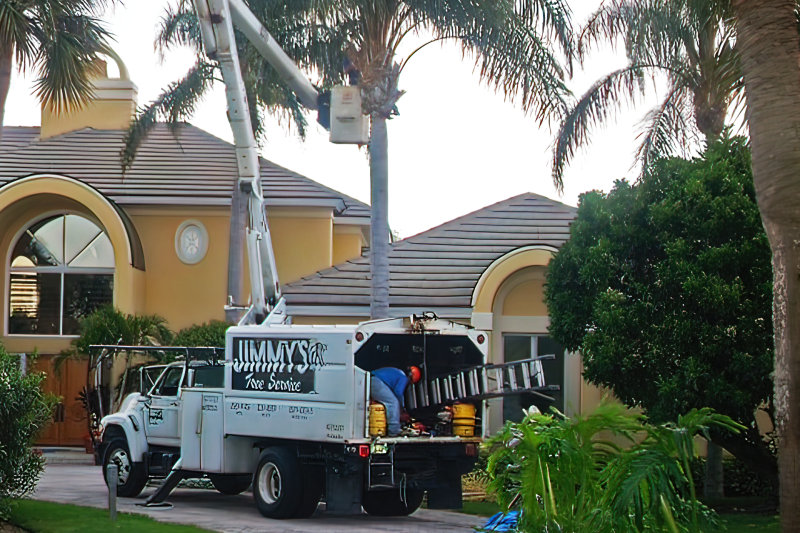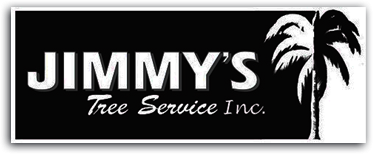For a fully keyboard-accessible alternative to this video, view it in Chrome or on any Android or iOS device, view it in Firefox with the YouTube ALL HTML5 add-on installed, or disable Flash in Internet Explorer.
Opening: How to prune palm trees, and why not to do the hurricane cut.
Doug Caldwell:
This is Doug Caldwell, University of Florida, Collier County Extension. It's the middle of August and it's the middle of hurricane season. As you can see the purveyors of the palm hurricane cut have been hard at work. We're gonna talk about why this is bad for your palms, and why you could face a fine violation for doing this kind of extreme pruning. Here in South Florida potassium deficiency with palms is a huge thing. Without enough potassium, palms can die. So by coming in and removing green fronds, which is a big source of potassium, is a reservoir of potassium for palms, you can force that palm into an early death. This is a boot of the palm tree. Not many people are familiar with that term in relation to botany or palms, but the boot is the base of the leaf or the frond of the palm. It has two functions. One is it has pipelines carrying the nutrients from the frond that was here, you can see some remnants here. These are like spaghetti to like the pipelines carrying the nutrients from the green frond into the main trunk. So it serves as a pipeline or source of nutrients. The second function is as you see, as a series of these boots. They wrap around the trunk and provide support to the important part of the trunk and that's Apical Meristem or the heart of the palm, the head of the palm. That's why we don't want to remove too many of these boots or even cut into them because you're reducing the shock absorbing capacity of these boots that help protect the head of the palm and high wind events. One way to gauge palm pruning is to look at the canopy area, the palm that's been pruned in relation to the hands on the face of a clock. These cabbage palms have been pruned way too much we're looking at almost 11 o'clock to one o'clock canopy outline. This is undesirable and unhealthy. The industry standard is to have a three o'clock to nine o'clock canopy outline. Although this will vary somewhat, you know palm species is some palms have almost full circle of green fronds normally so this needs to be taken into account. This is an example of what a cabbage palm should look like. It has a nice full head of green fronds, so we don't need to remove any green fronds. Or do we? Wait what about these ugly flower stalks and then messy fruit to this cabbage palm can produce. Some people say you got to remove those fronds to get to the fruit. Well, let's find out from the real world people. Mark Chan, harbor landscaping. Glad can make it this morning.
Mark Chan:
Thanks, Doug. Nice to be here. Yeah, in removing the fronds or removing the flowers from the tree, they can be removed without removing any of the fronds. And that's really what you want to do. You want to leave on as many green fronds as possible. And we can cut the flowers out using a tool like this. This is a pull saw with a snap head cutting attachment. And we can just sneak into the palm and cut the flowers out and leave all the green fronds on and the palm will be healthy and happy.
Doug Caldwell:
And you won't have all that messy fruit that could drop on your roof or on your sidewalk.
Mark Chan:
Exactly. There's no problem removing the flowers or the floressences. But you want to leave green fronds on as often as possible. And only remove brown fronds.
Doug Caldwell:
So what about this guy is easy. He's a shorty, what if you gotta climb into the tree?
Mark Chan:
If you have to climb into a tree, there, we use ladders to get up to the tree. Because you don't want to use spikes or anything that will put a wound into the trunk of the palm. The palms are monocots. So they don't produce wood and they cannot heal or close a wound on the trunk. So a lot of times people will use spikes to climb the palm. And that's a big no no, that will injure the palm for life. And then there's an opening there for insects or disease to get in. So you want to keep the trunk of the palm healthy and as solid as possible
Doug Caldwell:
More attractive that way too. Well, let's see how easy this can be. Okay.
Mark Chan:
So Marcos is up under the canopy and he's being extra cautious about not nicking any of the green fronds. He's just working his way around with the snap cutter and just cutting out the inflorescence. Alright, so we've finished pruning the palm, and you can see Marcos has cut out all of the flowers and seed pods. And this is the debris that came out of this one palm. It took him about 10 minutes to do, and he barely broke a sweat. And you can see the palm still has a full canopy. We haven't removed any of the green fronds or any fronds at all from this palm. The lower ones have a little brown on the tip, but that's fine. They're still photosynthesizing and still feeding the tree. So this palm is looks a lot better and is very healthy and we'll be happy for the flower removal.
Doug Caldwell:
Well, Mark, we know about pruning the flowers. What about let's look at this giant cabbage palm, and we've got a lot of brown here. It's unsightly and could be a fire hazard.
Mark Chan:
Absolutely, Doug. This palm is a little taller than the other one. So we'll be using a ladder to access the canopy. And we'll be removing the brown fronds with a chainsaw and removing the inflorescence up above with loppers or pruning shears. Okay, so Marcos has installed a ladder into the canopy of the tree and he's getting his chainsaw ready, and he will start removing the brown fronds here in a few seconds.
Right now Marcos is using a handsaw to cut out the own inflorescence he's being extra careful not to nick any of the green fronds, the ones we want to leave on. And he should be done in a few minutes.
Doug Caldwell:
Well, that's a beautiful job mark. We've not removed any green fronds.
Mark Chan:
Exactly, Doug we've we've taken out the dead the inflorescence. We've left on all the green fronds that we could, and even the boots up around the palm we've left those intact so the palm will be protected and It looks a lot better.
Doug Caldwell:
And you can see a little narrowing of the trunk we talk about pencil point when you remove too many green fronds, course, moisture and fertilizer nutrients can attribute to narrowing of the trunk. But let's look at another example where it's even worse. Okay, Mark, here's a classic example of pencil pointing on a cabbage palm from either removing too many green fronds or some other variables you might think of.
Mark Chan:
Absolutely drought stress would cause this. And like you said, removing too many green fronds, you can see the trunks narrowed in and that's a weak spot on this palm that is prone to wind throw if we get some high winds.
Doug Caldwell:
You get a high wind going and if your house is nearby.
Mark Chan:
Yeah, you could have some trouble with that one. So
Doug Caldwell:
Because those tops are heavy, they could weigh 300 400 pounds.
Mark Chan:
Exactly. Yeah, at least
Doug Caldwell:
that's not safe. So the take home message with pruning palms is don't remove green fronds. Otherwise, you're shortchanging the palm nutrient-wise, you're removing especially potassium that's been stored. Secondly, you're weakening that palm structurally, those palm fronds and the boots are a shock absorber that help protect the palm in high wind events. This is Doug Caldwell helping you beautify your landscape and protect the environment.






